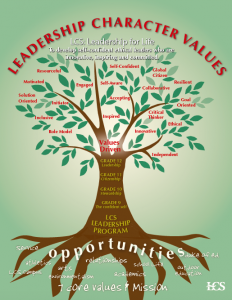Three years ago, I got the chance to start working in our newly formed program called Leadership, Character, and Values (LCV). Aimed at building leadership from grade 9 through to grade 12, it focuses on scaffolding successful leadership skills as students moved through their high school experience and then off to post-secondary education. Like most independent schools, the diversity of student programming is both wide and sometimes competitive (often competing against each other for time and space).
through to grade 12, it focuses on scaffolding successful leadership skills as students moved through their high school experience and then off to post-secondary education. Like most independent schools, the diversity of student programming is both wide and sometimes competitive (often competing against each other for time and space).
We have spent the past few years building the program and slowly earning the respect (program-wise) of both staff and students. That being said, our students are constantly pulled in many directions which creates a hierarchy of priority, which sometimes results in ‘Leadership’ being prioritised differently when up against academics, athletics, arts, and other programs. By empathising with the students, it is easy to understand why they might disengage in a program like LCV when it’s new, mandatory, and immersed in a program demanding school such as mine. Though I have seen an increased engagement over the years, I am still challenged to create an engaging program that drives enthusiasm and empowers students to embrace and value skills surrounding leadership and character.
What does it all come down to?
- All leadership is based on the ability to work together and build relationships. If the students aren’t aware of their own abilities and ‘types’, then how are they able to correct actions that would affect their own ability to work with others on a day to day basis.
- Values must be core understandings of who they are and what they can contribute to the class/program
- Awareness of who THEY are is key.
This year, I’m hoping to tackle three distinct areas.
- Build a program that engages students to think deeply about their leadership potential (as defined by them)
- Empower students to make decisions, plan events, and become aware of their own strengths and weakness as they apply it to working with others and building relationships.
- Create an enthusiasm around the leadership, character, and values program.
Scaffolding the year:
Yesterday, I ran a two-hour leadership retreat for the grade 11’s. The goal was to create awareness around their ‘type’ (defined by Extrovert/Introvert, Thinker/Feeler, Sensor/Intuitive, Perceiver/Judger) and how it affects their ability to work in teams as they are tasked this year with designing the student Christmas party and a Global Literacy Initiative week in the spring. Teamwork, awareness of self, and leadership will ultimately be the key to their success.
Prior to the morning retreat, each grade 11 completed a newly designed Personality Type ‘Verifier’ through a program called TypeCoach developed in association with Harvard and Stanford. From the results we designed a program to increase personal awareness of how their type will affect their ability to work with others. The resulting report is eye-opening and gives areas to work on, challenges they face, strengths they have, and suggested techniques when working with other ‘Types’ – Here is my report for an idea of what that looks like.
After a few team challenges (including the 18-minute Marshmallow Challenge developed by Tim Wujec – see below) and individual reflection we had them ‘own’ their type and make commitment statements for the year. I am hoping that we can circle back throughout the year to their type and these statements.
Love to hear your thoughts, feedback, suggestions?
My Challenge:
How might I build a leadership program for the Grade 11 class that empowers and engages a meaningful and enthusiastic approach to leadership, character, and values?

Are these students reflecting on their leadership, character and values as participants in all the programs they participate in? It seems like there might be an opportunity here to integrate their learning with the competing roles they have in the school. Not sure, but you might find ways for them to fulfill multiple “requirements” at once. Also, I think it’s important for young people (and their teachers) to recognize that sometimes we have to make choices according to priority: if Leadership is important, what am I willing to give up in order to focus on these skills?